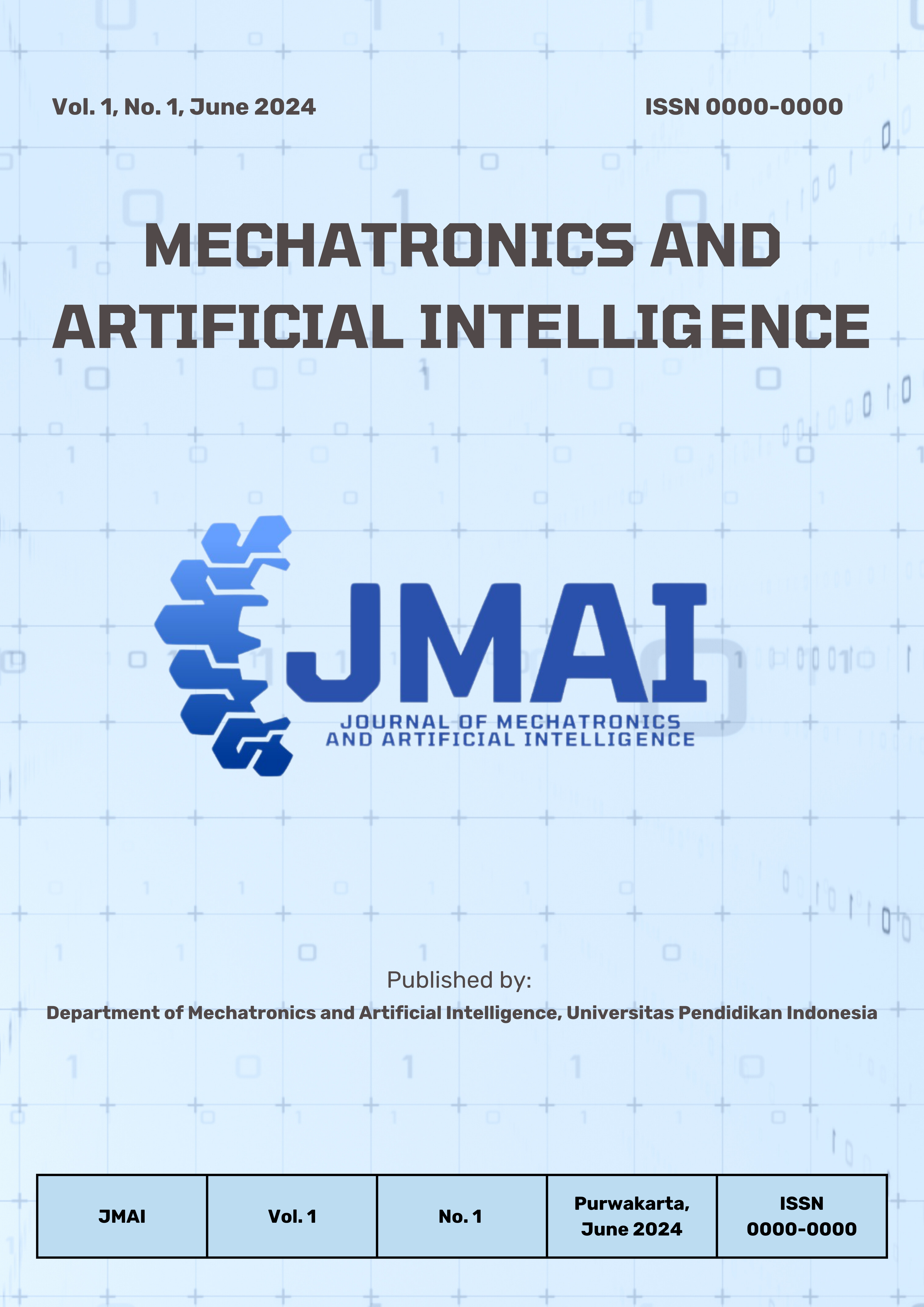Prototype of Monitoring System for Lithium-Ion Battery Charging and Discharging on UPS Using Atmega 328p
Abstract
Keywords
Full Text:
PDFReferences
R. Pradana, A. Surya Wibowo, and A. Sugiana, “Perancangan Dan Simulasi Sistem Persinyalan Kereta Api Secara Nirkabel Design and Simulation Railway Signal System Wirelessly,” vol. 8, no. 5, pp. 4397–4408, 2021.
D. Serrano-Jiménez, L. Abrahamsson, S. Castaño-Solís, and J. Sanz-Feito, “Electrical railway power supply systems: Current situation and future trends,” Int. J. Electr. Power Energy Syst., vol. 92, pp. 181–192, 2017.
X. Fan et al., “Battery technologies for grid-level large-scale electrical energy storage,” Trans. Tianjin Univ., vol. 26, pp. 92–103, 2020.
K. W. E. Cheng, B. P. Divakar, H. Wu, K. Ding, and H. F. Ho, “Battery-management system (BMS) and SOC development for electrical vehicles,” IEEE Trans. Veh. Technol., vol. 60, no. 1, pp. 76–88, 2011, doi: 10.1109/TVT.2010.2089647.
J. Loukil, F. Masmoudi, and N. Derbel, “A real-time estimator for model parameters and state of charge of lead acid batteries in photovoltaic applications,” J. Energy Storage, vol. 34, p. 102184, 2021.
N. Rahmadani, M. Musaruddin, M. N. A. Nur, H. T. Mokui, and A. N. Aliansyah, “Analisis Prakiraan Kebutuhan Energi Listrik di Kabupaten Kolaka Utara menggunakan Metode Dkl 3.2, Regresi Linear dan Software Leap,” J. Fokus Elektroda Energi List. Telekomun. Komputer, Elektron. dan Kendali), vol. 8, no. 2, pp. 101–109, 2023.
F. Yang, S. Zhang, W. Li, and Q. Miao, “State-of-charge estimation of lithium-ion batteries using LSTM and UKF,” Energy, vol. 201, p. 117664, 2020.
H. Tian, P. Qin, K. Li, and Z. Zhao, “A review of the state of health for lithium-ion batteries: Research status and suggestions,” J. Clean. Prod., vol. 261, p. 120813, 2020.
Đ. Lazarević, M. Živković, Đ. Kocić, and J. Ćirić, “The utilizing Hall effect-based current sensor ACS712 for true RMS current measurement in power electronic systems,” Sci. Tech. Rev., vol. 72, no. 1, pp. 27–32, 2022.
M. Santoso, Z. M. A. Putra, A. T. Nugraha, F. Najudah, and R. Firdiansyah, “Enhancing Measurement Quality of Voltage Divider Circuit and ACS712 DC Current Sensor in PPNS Baruna 01 Crewboat Solar Power Plant,” in E3S Web of Conferences, 2024, vol. 473, p. 1009.
A. A. Arefin, A. S. N. Huda, Z. Syed, A. Kalam, and H. Terasaki, “ACS712 based intelligent solid-state relay for overcurrent protection of PV-diesel hybrid mini grid,” in 2020 IEEE Student Conference on Research and Development (SCOReD), 2020, pp. 59–62.
L. J. Bradley and N. G. Wright, “Optimising SD saving events to maximise battery lifetime for ArduinoTM/Atmega328P data loggers,” IEEE Access, vol. 8, pp. 214832–214841, 2020
DOI: https://doi.org/10.17509/jmai.v1i1.69861
Refbacks
- There are currently no refbacks.








